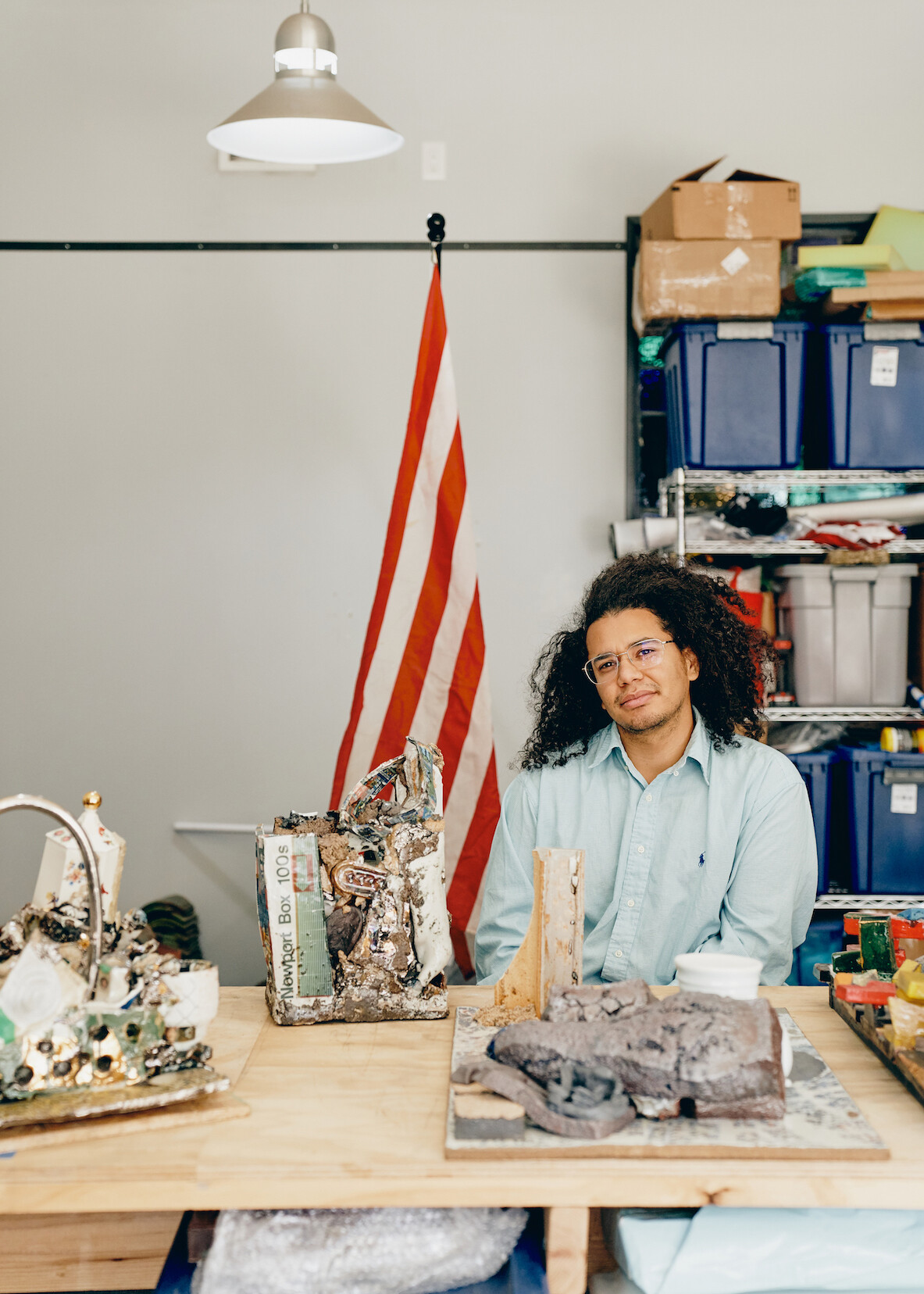Archaeology of the Present
February 23, 2023–January 21, 2024
725 Vineland Place
Minneapolis, MN 55403
United States
Hours: Wednesday–Sunday 10am–5pm,
Thursday 10am–9pm
T +1 612 375 7600
info@walkerart.org
St. Louis–based artist Kahlil Robert Irving (US, b. 1992) creates assemblages made of layered images and sculptures composed of replicas of everyday objects. Mainly working in ceramics, Irving critically engages with the history of the medium and challenges constructs around identity and culture in the Western world.
His ceramic sculptures, long the core of his practice, incorporate artist-made replicas and images that are often neglected but can be representative of a historical moment, a way of life, or even specific references to individuals. Using what many would consider detritus, Irving folds into his sculptures through an arduous practice of reheating pieces in the kiln to achieve intricate layers. Recent works have examined digital media, memory, race, and Black life as subjects embedded in his ceramic elements and made visible in prints and wallpapers. More than just an archival account, Irving’s approach approximates archaeology, uncovering layer upon layer of evidence of our own contemporary artifacts.
This exhibition features Irving’s new sculptures, video, and found objects that together consider our relationship to the city street as a place and a concept. The street can be seen as not only a space of collective gathering but also one of transit between points of safety and security. Like sifting through archaeological strata, Irving’s work reveals how our present moment is composed of physical remnants that begin to tell a fragmented story.
For his presentation at the Walker, Irving has situated sculptures and other items within a large plywood platform, resembling a stage. Viewers can move onto the structure to encounter both artworks and manufactured objects alike. Some, such as a painted industrial ceramic pipe, will be elevated through the platform, standing above most viewers like a large pillar or column. A brick wall similarly emerges through the floor, while ceramic tiles made to resemble textures from the urban street are sunken into the platform or visible through openings protected by a railing. These gaps or cutouts in the floor make room for each work to be revealed, drawing attention to what Irving calls “the unspoken, liminal gaps between life and poetry.”
Viewers can move throughout the landscape and engage with these objects at varying eye levels. Also set into the structure are two video works that depict both the city street and the sky, inverting expectations of the sky as a place of possibility and the ground as one of necessity. Together, they symbolize the assertion that change and progress are found communally and presently, rather than in an idealized future. Viewers are also able explore the platform as an object itself, moving around it to experience changing perspectives and engage with the installation as a whole.
Curatorial team: William Hernández Luege, curatorial assistant, Visual Arts

